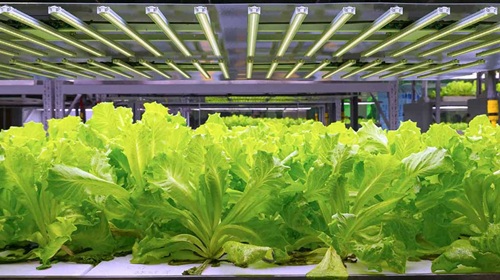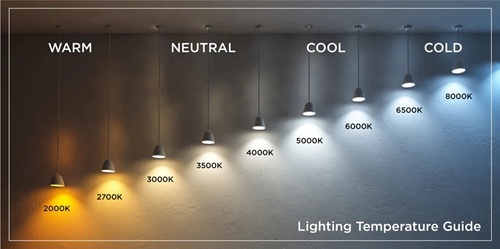Jul 3rd 2025
Why Light is Important for Plant Growth: From Seedling to Harvest
We all take light for granted until you start gardening, especially with indoor hydroponics as you begin to understand the true value of sunlight. Nothing can be grown in the dark. Light is essential for any plant that has green chlorophyll flowing through its leaves. So, light is practically the main ingredient in the world of gardening be it indoor or outdoor.
Therefore, understanding the fundamentals of photosynthesis and plant light requirements is essential if you want to be a successful farmer.
Sunlight vs. Grow Lights
From gamma rays to longwave radio waves, sunlight emits a wide range of radiation. Only a small portion of the entire spectrum is made up of the "natural light" that is visible to the human eye. We refer to it as the "visible spectrum."
The 400–500 and 600–700 nm wavelengths of blue and red light are the most important for plants. Not all parts of the light spectrum are used by plants!
Even while each plant has somewhat distinct needs in terms of light intensity, wavelengths, and exposure, most gardeners can still get excellent results for their plant development without going into too much detail.

Effects of the Primary Colors on Plant Growth
Blue Light
Blue light is in charge of guiding growth tips and leaves toward the light and is especially useful during the early stages of plant life. A good germination light should always have some blue in its spectrum. The blue light prevents leaves from growing around the fruits, and fertilized plants produce more seeds. Twenty percent of your crop will be lost quickly if there is not enough blue light in the spectrum.
Red Light
Because they possess what is known as a red-light photoreceptor, plants are sensitive to red in the light spectrum. The receptor is a blue-green pigment found in plant cells called phytochrome.
Red light has a variety of effects on plants. Plants that receive a lot of red light are typically tall and have many branches. Meta-topolin, a plant hormone, is produced more when the photoreceptor absorbs a lot of natural red light. This hormone keeps the plant green in the spring and summer by preventing the breakdown of its chlorophyll. And that is only effective because the plant requires its chlorophyll to turn solar energy into sugars at this exact moment.
Green Light
Green light barely affects plants at all. To the best of our knowledge, they do not have receptors for this color. Since plants actually do not absorb this color, this is most likely the case. Green light alone will make plants incredibly weak and unable to survive for long.
Some Common Grow Light Options
- High-Intensity Discharge (HID) Lights: These unique incandescent lights are frequently used in indoor gardening. They produce a lot of heat and are power-hungry. Therefore, you must use caution while putting them near plants. Metal Halide (more blue light) and High-Pressure Sodium (more red light) are two types of HID lights. These lights are used more often by large-scale growth companies.
- Fluorescent Lights: These don't produce a lot of heat and need less energy. Compared to HID lights, they are also more manageable and long-lasting. However, it is well known that fluorescent lights produce bluer light. As a result, they might not be able to provide your plants the full amount of light they require. These work really well if you are growing herbs.
- LED Lights: Compact, small, and very energy-efficient, they may be installed in close proximity to the plants. LEDs are commonly used on grow towers with lights due to their adjustability, as they can be brought closer to or further away from the plant canopy.
How Sunlight Can Be Replaced by Grow Lights
Based on our current understanding, there are three main light-related elements that might impact a plant's growth and development. They are:
- The intensity of the light or the amount of photon energy that is reaching the leaf. This establishes how quickly photosynthesis happens. Photosynthesis in the plant increases with intensity.
- How long does the plant get light? The seasons control this outside, and plants have adapted their life cycles to fit it. The plant's development will be impacted by arbitrary variations in the amount of light.
- For plants to thrive at various development stages and to blossom, they require both red and blue spectrum light.
You must choose grow lights that can meet all three requirements for an indoor grow system. Since you have just kept the lights on for a predetermined amount of time, the duration is the easiest to duplicate of them. With certain grow lights, intensity might be difficult. By adjusting the distance between the plant and the light bulb, gardeners can adjust the intensity of the light.
The intensity of the light increases with proximity to the light source. The issue is that a lot of grow lights also produce a lot of heat. Therefore, the plants may wilt or die if you put them too close. This is one of the benefits of using LED lights, since they don’t emit a lot of heat.
Wavelength is another challenging aspect. The sun is a perfect single source that radiates enough energy for the plants in all the wavelengths, blue and red. We do not yet have a single light source capable of emitting both red and blue spectrum light in adequate quantities. Indoor growers get around this limitation by using a mix of warmer and cooler lights.

This brings us to color temperature, or Kelvin ratings, also referred to as K. White light with lower ratings (e.g., 2700K to 3000K white) produce a warmer white with some red hue. Conversely, white light with higher rating (e.g., 5000K to 6500K white) produce a cooler white with some blue. By using specific K ratings, in combination with red or blue lights is an effective way to adjust your lighting spectrum. For example – using red light diodes combined with 6000K white diodes, will provide both red, white and blue together.
Perfectly replicating sunlight indoors is not easy. But by using different light colors and temperatures, you can achieve phenomenal results with indoor grow lights.
Final Thoughts
Plants are intelligent living things and react to light in complex ways. Gardeners can maximize light sources to better meet the demands of their crops because vertical farming is often done inside. All year round, this can result in larger yields of higher-quality crops. However, the benefits don't end there. Custom LED grow lights combined with effective vertical farm management can result in more efficient growth.




